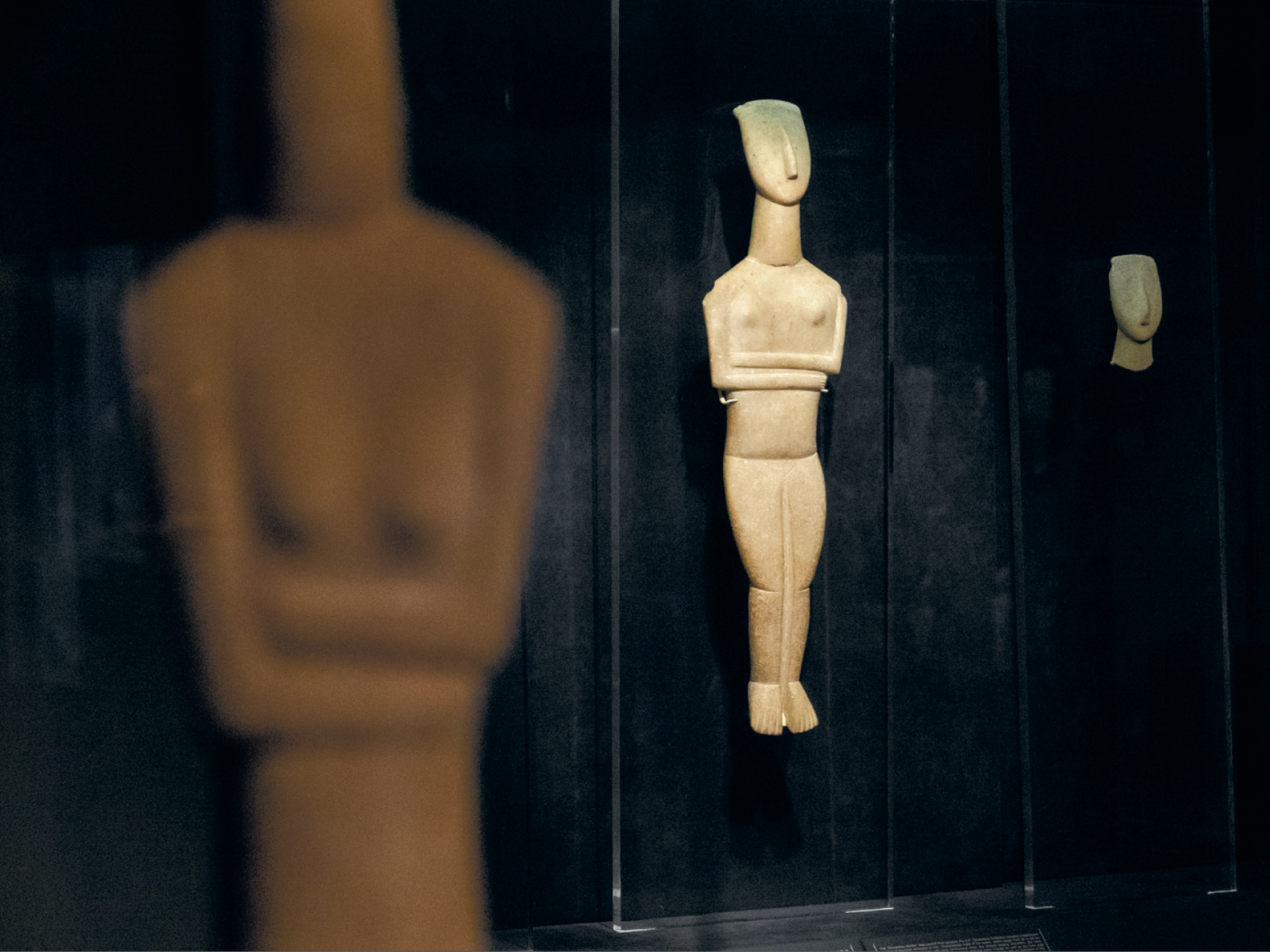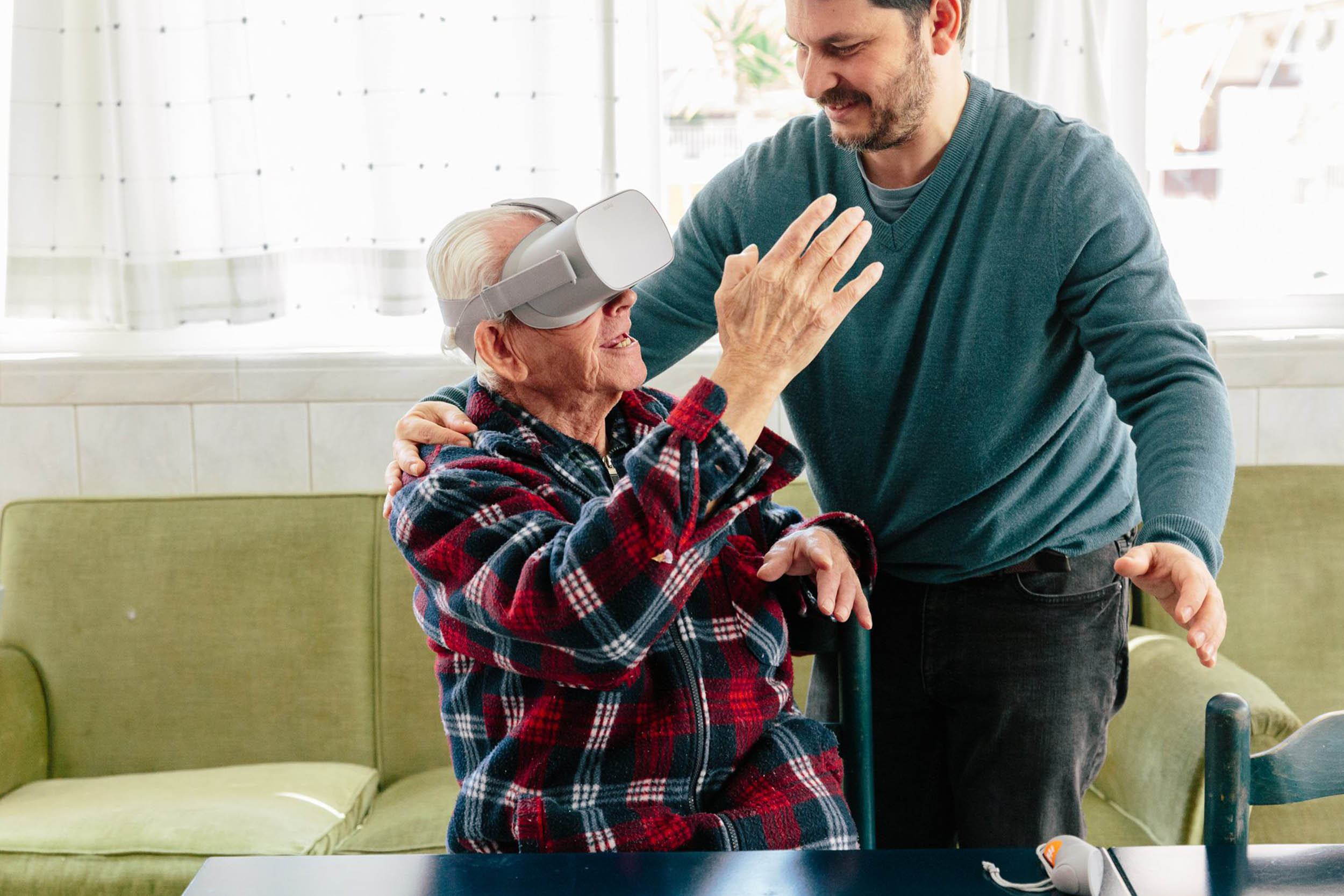Our mission

Since then, it has significantly expanded and now hosts one of the most comprehensive private collections of Cycladic art in the world, featuring representative samples of the world-renowned Cycladic marble figurines.
The nucleus of the Museum’s Cycladic Art Collection is its collection of marble figurines depicting naked human figures that fascinate the visitor with their simplicity and abstractness, elements that have inspired some of the 20th-century’s greatest artists, such as Konstantin Brancusi, Amedeo Modigliani, Alberto Giacometti, Barbara Hepworth, and Henry Moore.
The Museum’s permanent collections encompass 3000 Cycladic, Ancient Greek, and Ancient Cypriot artifacts, testimonies to the civilizations that flourished in the Aegean and the Eastern Mediterranean from the 4th millennium BC to circa the 6th century AD.
The temporary exhibitions of the Museum of Cycladic Art focus on archaeology, modern and contemporary art, with the aim of acquainting the public not only with antiquity but also with important 20th and 21st century artists. These exhibitions explore the connections between ancient cultures and modern and contemporary artistic creations. The Museum has invited artists and curators from around the world to study and draw inspiration from its collections, fostering a dialogue between ancient artifacts and the creations of our times. To date, the Museum has hosted exhibitions featuring prominent artists such as Salvador Dali, Pablo Picasso, Thomas Struth, Louise Bourgeois, Sarah Lucas, Ugo Rondinone, Jannis Kounellis, Mario Merz, Ai Weiwei, Cy Twombly, George Condo and Βrice Marden and Cindy Sherman, among others.
THE MISSION
The Museum’s mission is to promote Aegean civilization (from 6000 BC) and to disseminate its art, both locally and internationally, highlighting the evolution of art and its different manifestations, including contemporary art exhibitions revealing the outstanding ways in which antiquity has influenced the present.
The Museum is a place of dialogue between different groups for the purpose of education, research, and recreation.
STRATEGIC OBJECTIVES
Inclusion
Research
Exhibition Program
Partnerships
Infrastracture
Environmnet & Sustainability
A GREEN MUSEUM
One of the strategic goals of the Museum of Cycladic Art is to reduce its energy footprint and raise public awareness of environmental issues.
More particularly:
1. To this end, the Museum regularly conducts educational programs related to the environment and nature.
2. In 2019, together with WWF Hellas, the Museum created Cycladopolis, an educational game designed for children over 6 years old that was launched in schools in Greece and abroad through the Museum’s Museum Kits for Cycladic Culture. Cycladopolis offers an enjoyable way for children to learn about the importance of nature for our life on the planet and gain insights into the precious biodiversity of the Cyclades and the concept of sustainable development.
3. The Museum recycles waste and uses LED lamps for 80% of its lighting.
4. The Cycladic Shop uses only paper bags.
5. The Cycladic Café opts for biodegradable straws.
6. Solvents and plastic bags used for cleaning are biodegradable.
7. Recycled paper is used for various purposes (photocopies, paper napkins, etc.).
THE MUSEUM ABROAD

The dissemination and promotion of Greek Prehistoric Classical Art abroad was Nikolaos and Dolly Goulandris’s principal goal, long before the establishment of the Museum. The collection of Cycladic and ancient Greek art forged by the two collectors from 1960 onwards, was soon displayed in some of the world’s greatest museums.
The Museum embarked on its international journey in 1979 with the first exhibition of the Collection held abroad at the National Gallery of Art in Washington. This marked the beginning of an impressive series of exhibitions in major metropolises in the following years, such as Tokyo (National Museum of Western Art), Kyoto (National Museum), Houston (The Museum of Fine Arts), Brussels (Musées royaux d’Art et d ‘Histoire), London (The British Museum), Paris (Galeries nationales du Grand Palais) and New York (Onassis Foundation). The series of exhibitions abroad continued after the establishment of the Museum with excellent exhibitions in Madrid (Museo Nacional Centro de Arte Reina Sofia), Rome (Musei Capitolini), Beijing (Beijing Art Museum of Imperial City) and Istanbul (Sakip Sabanci Museum).
In 1997, the Cycladic Art Foundation was founded in New York. The purpose of the Foundation is to offer resources for charitable and educational purposes, with primary focus on research, study, dissemination and promotion of Cycladic and Ancient Greek Art.
Furthermore, cultural exchanges between Greece and Spain from 1999 to 2001 led to exhibitions like “Sculptures from the Cyclades islands.: The N.P. Goulandris Collection at the Museo Nacional Centro de Arte Reina Sofía” and “Pablo Picasso: Studies for Guernica”, with,” featuring works from the Museo Nacional Centro de Arte Reina Sofía, exhibited at the Museum of Cycladic Art.
Under the leadership of Sandra Marinopoulou, who assumed the role of President in 2008, the Museum has been dedicated to engaging with young audiences and elevating its global recognition through exhibitions, international events, international members and supporters, as well as collaborations with museums abroad.
The Museum organizes fundraising events every year in renowned Foundations and Museums of the world: the American Museum of Natural History, the British Museum, the Guggenheim Museum, and Harvard Medical School. Metropolitan Club, Metropolitan Museum of Art, New York NY Public Library, Tate Modern, Victoria & Albert Museum.
Since 2011, an annual series of lectures in memory of Dolly Goulandris has been established at the Metropolitan Museum of Art in New York.
Finally, throughout its years of operation, the Museum of Cycladic Art has formed various collaborations to host exhibitions with major museums and cultural institutions abroad, such as:
G. Whitaker Archaeological Museum, Mothia, Archaeological Museum of Pihtycusae, Ischia , Museo Archeologico Eoliano L. Bernabò Brea, Lipari, Paolo Orsi Archaeological Museum, Syracuse, Archaeological Museum of Locri Epizephyrii, Archaeological Museum of Seville, Archaeological Museum of Taranto, A. Salinas Archaeological Museum, Palermo, British Museum, London, National Archaeological Museum, Madrid, National Archaeological Museum, Florence, National Archaeological Museum, Naples, National Archaeological Museum, Malta, National Etruscan Museum of the Villa Guilia, Rome, Museo Gregoriano Etrusco, Vatican, Centre Georges Pompidou, Paris, Metropolitan Museum of Art, New York, Musée du Lοuvre, Paris, Museum of Fine Arts, Boston, Musei Capitolini, Rome, Museum of Modern Art, Vienna, Philadelphia Museum of Art, Cy Twombly Foundation, FABA (FUNDACIÓN ALMINE Y BERNARD RUIZ-PICASSO PARA EL ARTE), Fondation Beyeler, Basel, Giacometti Foundation, Zurich, Henry Moore Foundation, Jeu de Paume, Paris, Musée Rodin, Paris, Musée National Picasso-Paris, Museum of Fine Art, Boston, Philadelphia Museum of Art, Tate Modern, London

